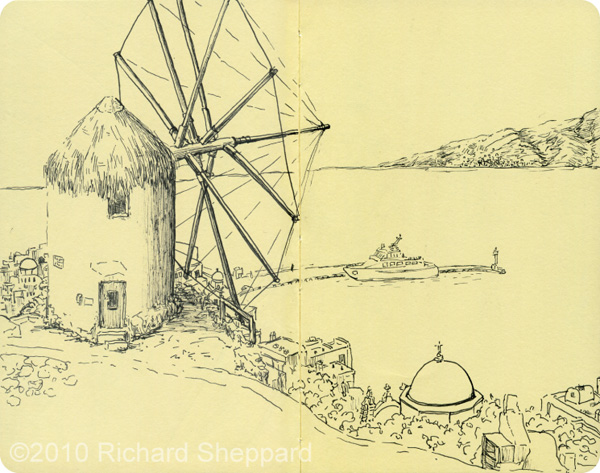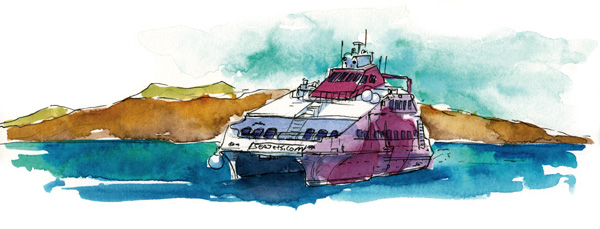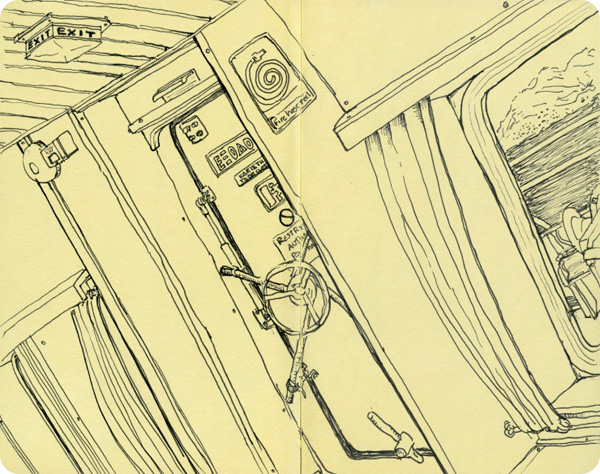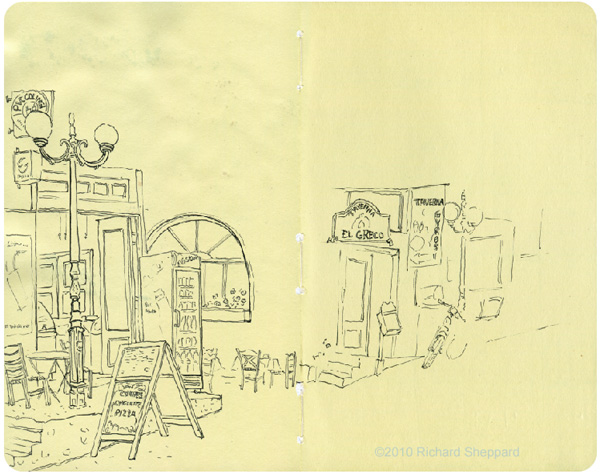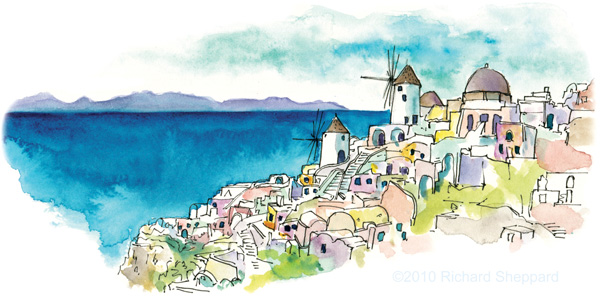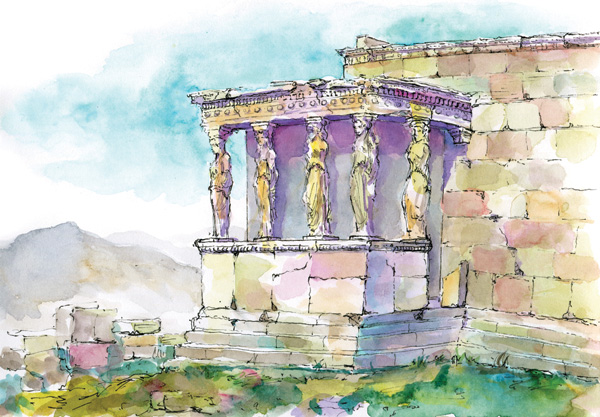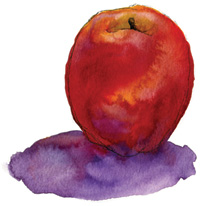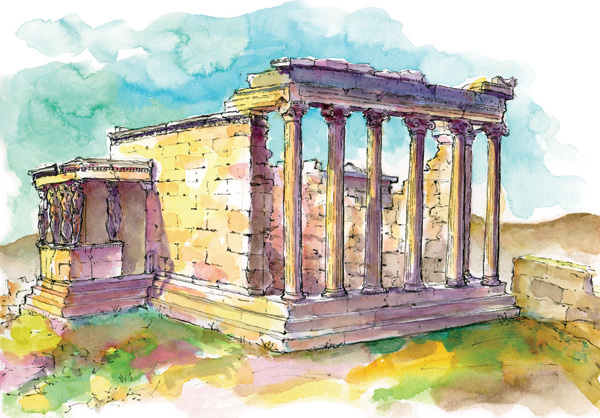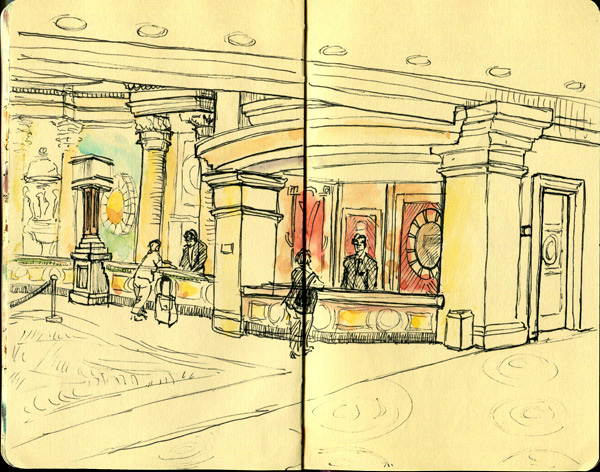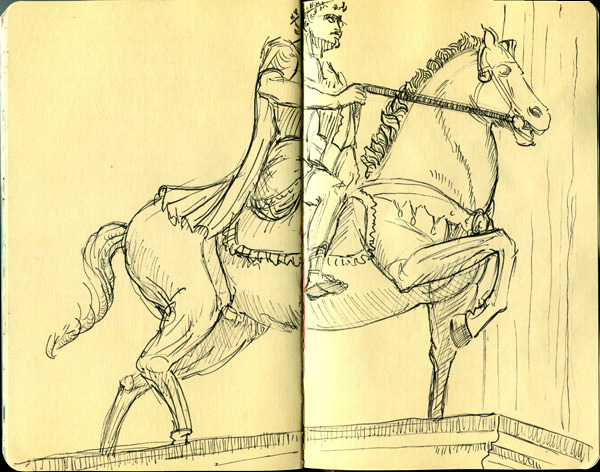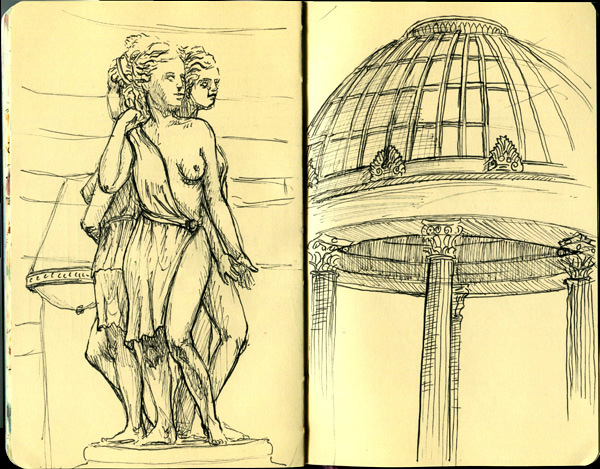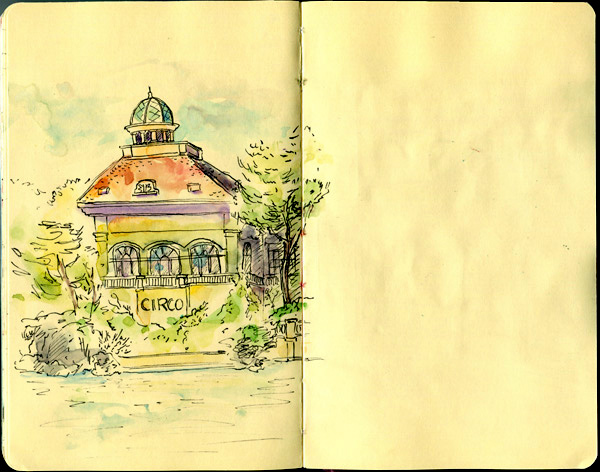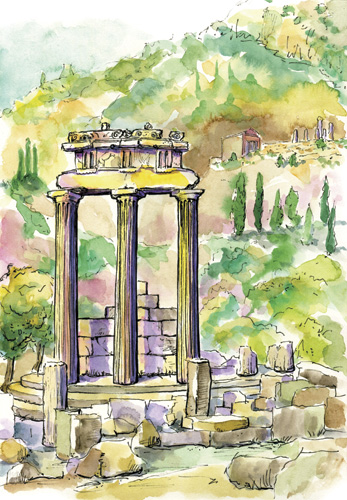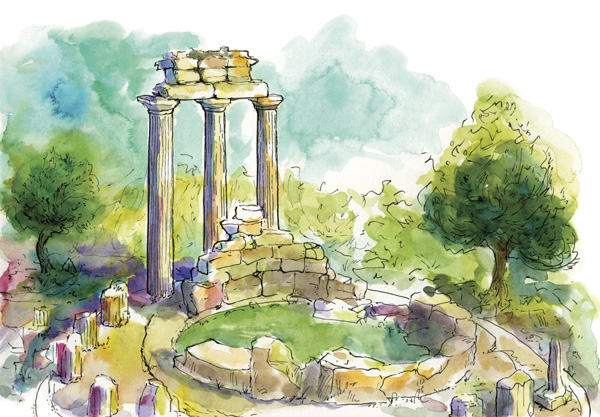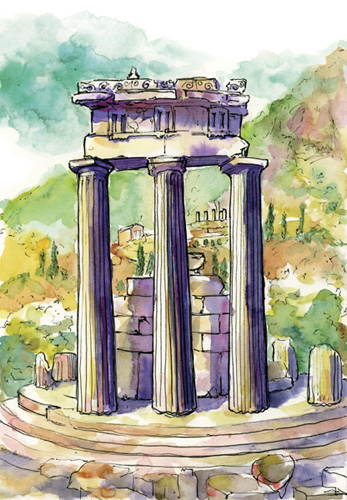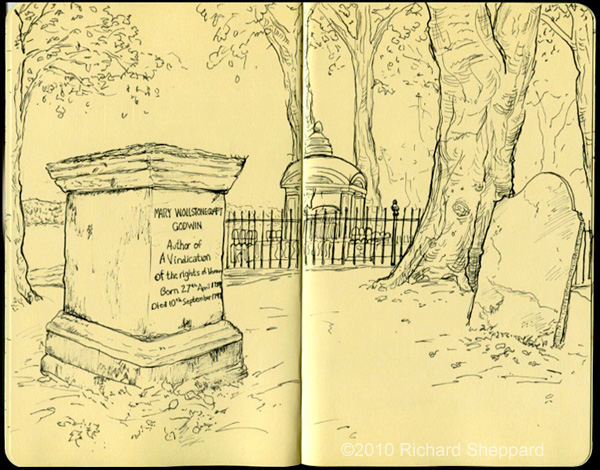(Excerpt from my book, The Artist on the Road: Impressions of Greece)
To keep my artistic momentum going, I head out to draw. One of the first things I notice is an old windmill situated on a nearby hill, overlooking the city. It’s been converted to a museum, so I go inside. A workroom fills most of the area, with a spiraling stone stairway on the left. Curious, I climb the steps to the second floor. The space is cramped, with several large wooden gears used for grinding grain, and on the far side, a small window illuminates the room and reveals sweeping views of the city below. It’s dusty in here but I like the smell of old wood. I walk back down and exit into the fresh air. It’s here that I do one of my favorite drawings and interestingly, it has a similar feel to the drawing I did on Santorini this morning. Fortunately, I didn’t over burden the page with detail leaving open space for the work to breathe. I like the way the composition seems to roll across the page, keeping the eye moving. The windmill looks formidable with its kaleidoscope arms spiraling outward over the city.
